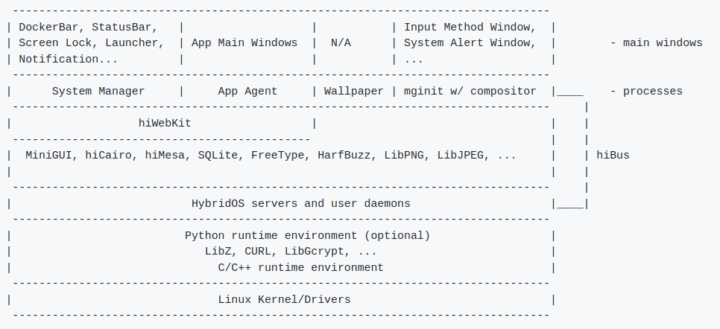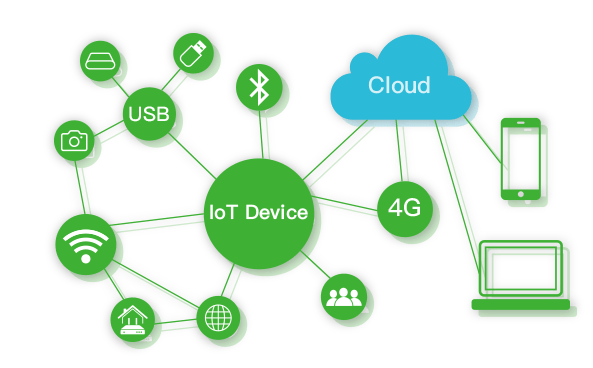As I wrote about the “Summer 2021 of Open Source Promotion Plan” earlier, I noticed a new open-source operating system called HybridOS described as “totally new” and designed for “smart IoT devices and cloud computing environment”.
It’s actually more of an ecosystem than an operating system, as it offers three main components with a device side running on devices running Linux kernel or another POSIX-compatible kernel, a server side running on servers in the cloud, and a client side to manage the cloud and devices from Windows, Linux distributions, iOS, or Android.
HybridOS Device Side relies on several open-source projects including:
- hiWebKit, the HybridOS derivative of WebKit:
- hiACEJS, the HybridOS derivative of OpenHarmony ACELite
- hiViewRenders, the renderers for
hiviewtag of hiWebKit - hiShell, the app running environment (the shell)
- Various Graphics stacks including
- hiMesa, the HybridOS derivative of Mesa
- hiCairo, the HybridOS derivative of Cairo:
- hiDRMDrivers, DRM Drivers for HybridOS
- MiniGUI, the window system for HybridOS
- hiBus, the data bus server – an enhanced edition of OpenWrt’s uBus
- System daemons – hiLogged logging service, and hiSecd security service
Most of the source code can be found on FMSoft Github account, the company behind MiniGUI and HybridOS projects.

The Device Side has been ported to Allwinner R818 EVB2 evaluation board as well as a Rockchip PX30 development kit both equipped with 1280×800 displays. You can watch the video demos and get the instructions for both platforms on a blog post on HybridOS website.
Curious minds may have already found out the client-side and server-side repository are completely empty except for the GPLv3 license files. That may be why the project needs students to help out this summer.
But nevertheless, HybridOS aims to provide a universal app framework for IoT devices and client apps for Linux, Windows, macOS, Android, and iOS operating systems by using HVML (Hybrid Virtual Markup Language). Other languages like C++, Python, and JavaScript can be used on IoT devices, client apps, or servers.
The server-side will implement support for HTTP, CoAP, distributed MQTT server, identity authentication mechanism, and some basic services, such as firmware and app upgrade. The developers also mention serverless technology for IoT cloud computing in order to easily integrate the existing cloud services by writing a simple script in Python.
The IoT devices, clients and servers will be able to interact over various communication standards including 4G/LTE, NB-IoT, Wi-Fi, Bluetooth, ZigBee, NFC, RFID, USB, Ethernet, RS232, and so on. Look further into the future, HybridOS plans to provide a blockchain-based IoT security service and an enhanced MQTT implementation for communication between devices and an identity authentication mechanism based on blockchain technology.
More details can be found on the official website.

Jean-Luc started CNX Software in 2010 as a part-time endeavor, before quitting his job as a software engineering manager, and starting to write daily news, and reviews full time later in 2011.
Support CNX Software! Donate via cryptocurrencies, become a Patron on Patreon, or purchase goods on Amazon or Aliexpress





